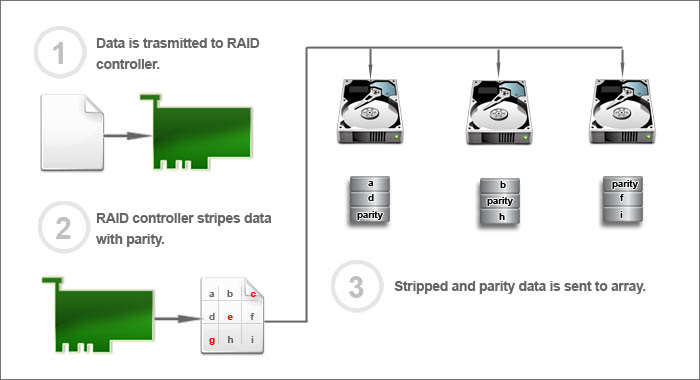 |
 |
 |
RAID Implementation Types
 RAID 5
RAID 5
The popular kid, RAID 5 is one of the more used RAID array systems.
Here is where things start to get interesting. Instead of striping just the data, BOTH data and parity is striped onto at least 3 drives. What this does is takes away the bottleneck associated with a dedicated parity drive (RAID 3 & RAID 4) and distributes it to each drive.

- Data is first sent from server to the RAID controller
- The RAID controller will then stripe the data and then spread parity across the array.
![]()
This makes RAID 5 the fastest read data transaction rate out of all the RAID array systems. Also, since there is no parity drive, efficiency is much improved.
On the other hand, this array requires a fairly complex RAID controller design (There's always a trade off isn't there?).
In the instance that one of the drives fails, a replacement drive is needed, but the array is not destroyed. In the event of a two drive failure, the array itself is left vulnerable until the drive is replaced and data is reconstructed. Data loss here is inevitable.



